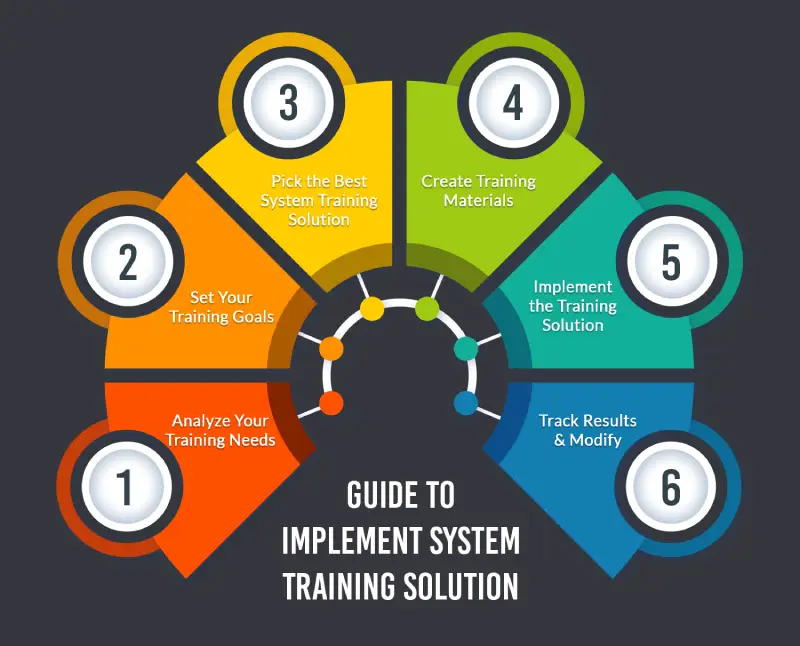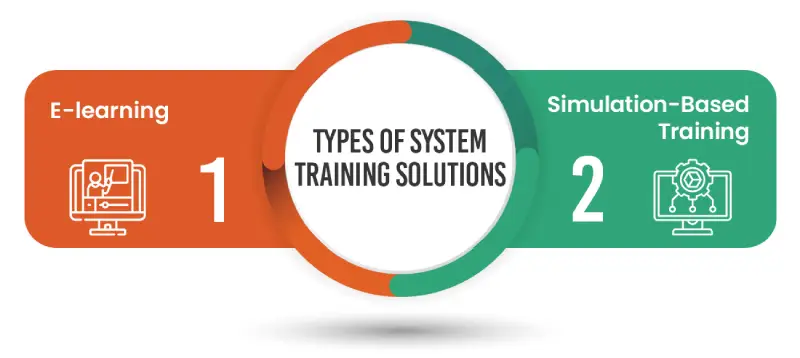Introduction
Effective system training is now a requirement in the hectic corporate world. Business performance could be greatly impacted by implementing new systems and ensuring employees are appropriately trained as companies continue to embrace digital transformation. Even the most advanced technologies have the potential to become an obstacle rather than an efficient tool in the absence of proper training.
However, implementing an effective systems training solution can be difficult. Businesses must overcome various challenges, from setting goals to measuring performance. Let’s guide you step-by-step through the entire process and provide guidance to ensure your organisation deploys a system training solution that increases efficiency and lowers high–cost errors.
Why Does Your Organisation Need System Training?
Businesses use various technologies for Human Resources (HR), Customer Relationship Management (CRM), and Enterprise Resource Planning (ERP) tasks. The effectiveness of these systems forms the foundation of operations, but they are only as effective as the people who use them.
As per the Deloitte report, organisations that invest in thorough training programs saw a 24% increase in profit margin and a 218% increase in income per employee. Furthermore, 47% of the workers say that insufficient training has led to poor performance. In addition to increasing individual performance, efficient system training lowers costly errors, speeds up system adoption, and raises overall employee satisfaction.
This brings an important point to the forefront that during cost analysis of projects, typically only 1% is spent

Step 1: Analyze Your Training Needs
Gaps need to be identified before beginning systems training. A Training Needs Analysis (TNA) can reveal flaws and areas that require modifications in your existing training program.
The Reason for Assessment
A TNA helps in identifying inefficiencies and skill gaps. Investing in solutions that don’t address the fundamental issues is risky if you skip this phase. For instance, if your employees are having trouble using a CRM system, is it because of inadequate training or the system’s complexity?
Common Gaps in Knowledge and Skills
Typical Gaps include:
- Lack of system expertise
- Resistance to Implement new tools and processes
- Inconsistent use across departments
Tools to Evaluate Training Needs
Use tools such as system audits, usage metrics and employee surveys. Performance data can give you an idea where employees are having trouble using systems effectively. For example, direct feedback can tell you about their training preferences and pain points.
Step 2: Set Your Training Goals
After identifying the gaps, this step is to create training program goals that are precise and specific. It is challenging to track performance or make adjustments along the way without clearly defined goals.
How to Set Measurable Goals
Completing training programs should not be the only goal of a successful training program. Establish specific goals, such as:
- Boost system efficiency to 95% in every department.
- Lower error rates by 15% in six months.
- Reduce onboarding of new hires by 20%.
These goals need to be time-bound, relevant, quantifiable, achievable and targeted. For example, a business that adopts an ERP system might decide to cut down on the amount of time staff members spend generating reports by 30% in three months.
Step 3: Pick the Best System Training Solution
Every training solution is different. Finding the best one depends on number of variables such as the size of your workforce, the system’s complexity and the easy availability of training materials.
Types of System Training Solutions
E-learning: A flexible training solution lets employees finish training at their own speed. However, the interactive and practical approach is essential for systems training.
Simulation-Based Training: This kind of training allows employees to learn through practice by giving them practical, real-time experience with the system. A study by the Association of Talent Development found that 65% of workers are more likely to remember information if they can practice tasks in a simulated environment.

Criteria for Choosing the Ideal Solution
Take into account the following when choosing a system training solution:
Adaptability
Can the training platform adapt to accommodate your business needs?
Customisation
Does it allow you to modify content to fit various roles or departments?
Usability
Complicated training methods will only make learning more difficult.
For instance, if your business is implementing a new CRM system, a simulation-based solution that replicates the real interface would allow employees to become familiar with the software before its launch.
Step 4: Create Training Materials
The next step after selecting the best training solution is to develop interesting and dynamic training content. Keep in mind that the effectiveness of your training materials will determine how well your staff members retain the knowledge.
The Value of Interactive Training
The static, heavy-text manuals no longer work. Employees deserve interactive materials that let them put what they have learned into practice. According to a LinkedIn Workplace Learning Report 2023, it has been found that using simulations and real-world scenarios improves learning retention, and 94% of the employees will remain with the company longer if they invest in their learning and development.
Developing Effective Training Materials
Simulations
Assima Train gives your employees a powerful, risk-free, hands-on environment where they can learn and practice without fear of errors. It’s advanced simulation technology replicates real-life systems, offers users an authentic training experience that builds confidence and minimizes disruptions to real operations.
Role-Based Experiences
Assima Train adapt training to the various roles that exist within the organisation. For example, Sales may require scenario-based customer interaction training, while Finance benefits from data handling simulations. Tailored content helps ensure each department receives the specific skills they need.
Hands-on Practice
Assima Train encourages employees to interact with the system safely, promoting hands-on practice that allows them to explore, make mistakes, and learn from them without impacting live data. This immersive experience helps them develop mastery in their roles, fostering confidence and independence on the job.
Hence, Assima enables you to provide employees the confidence they need by simulating the live system in training environments before integrating the system into their everyday tasks.
Explore how Assima Train delivers real-world practice in a safe and risk-free setting
Step 5: Implement the Training Solution
Now that the content has been developed, it’s time to implement the training solution across the organisation. This stage is essential as even the best-laid plans for training programs can go wrong due to inadequate execution.
Key Actions for Successful Implementation of Training Programs
Project Planning
Give the rollout a reasonable timeframe. Make sure the department with the most urgent needs is given priority by breaking the process down into manageable stages.
Cross-Department Rollout
Make sure all departments are involved in the rollout. It’s crucial to plan effectively because the operations, marketing and sales teams may require distinct training approaches.
IT Support & Technical Configuration
Maintain a smooth integration with the current systems and have IT support on hand to address any potential technical issues.
Step 6: Track Results & Modify
The job doesn’t end with the implementation of training programs. The programs’ long–term success depends on tracking progress and making modifications in response to input.
Tracking Development
- Track employee performance and usage using system data.
- Conduct surveys frequently to get input on how well the training program is working.
- Check key performance indicators (KPIs) like lower error rates, higher system utilisation or quicker faster project completion times.
Key Performance Indicators (KPIs)
Here are a few KPIs you could monitor:
Error Rates: Calculate the frequency of system errors made by employees.
Training Completion Rates: Keep track of how many employees finish the training and how long it takes.
Employee Satisfaction Score: Conduct surveys to find out how employees feel about the system and training materials.
Iterations and Improvements
You might need to modify the training’s content or delivery strategies in view of your findings. Consider providing more opportunities for hands-on practice. For example, if employees are struggling with particular tasks.
Conclusion
Although implementing a systems training solution might seem overwhelming, your business can accomplish a seamless, effective rollout that empowers staff and boosts overall productivity by following this step-by-step guide. All these steps are essential to make sure your employees are prepared to use new systems efficiently.
Learn how Assima can help your organization transform learning with cutting-edge simulation technology. Contact us today and see how we can support your training initiatives.